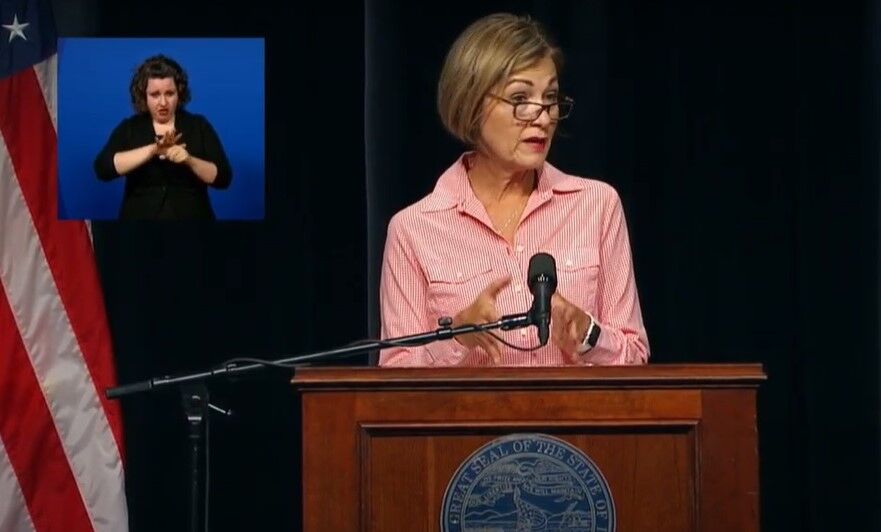Iowa counties request state assistance for storm aftermath
Iowa Gov. Kim Reynolds addressed state assistance to Iowa counties after Monday’s storm resulted in power outages and property damage.
August 11, 2020
Iowa Gov. Kim Reynolds addressed the storm aftermath at Tuesday’s press conference. Thirteen Iowa counties have requested state assistance, and more are anticipated.
Monday’s derecho left damage to cropland, grain bins and residential areas, and it resulted in power outages across the state.
“We’ve been in ongoing contacts with the team at Homeland Security and Emergency Management to discuss the range of issues impacting Iowans from power outages to crop damage to property losses,” Reynolds said.
An estimated 450,000 households are without power due to the storm; 550,000 households were without power at the peak. Reynolds said some power outages may last several days.
The early estimates are that 10 million crop acres have been impacted by the storm. The full damage will not be known for days — or possibly weeks — but initial reports “are significant.”
“This morning, I had a farmer reach out to me to say that this was the worst wind damage to crops and farm buildings that he has ever seen across the state in such a wide area,” Reynolds said.
She listed multiple buildings that experienced significant damage, including the Woodward Resource Center, Iowa Veterans Home in Marshalltown and nursing homes. The storm also impacted those being treated and tested for COVID-19.
“The Madrid Home for the aging in Boone County had part of its roof torn off, which forced the evacuation of six COVID-19 patients. And although no residents were injured, one staff member was taken to the hospital when a window blew out.”
Three Test Iowa drive-up sites in Marshalltown, Cedar Rapids and Davenport closed because of the storm and will remain as such through Tuesday. Reynolds said this will impact testing numbers, but they are working to reopen the sites as quickly as possible.
Joyce Flynn, interim director of Homeland Security and Emergency Management, spoke on the natural disaster response. They’ve received requests for generators, diesel fuel, debris removal support and communications assets.
“I urge everyone, with the power outages we’re experiencing, be cautious of consuming perishable foods that have been in your refrigerator a long time during this power outage,” Flynn said.
Perishable foods should be thrown out after four hours without power, and food in the freezer that reaches above 40 degrees should also be thrown away.
The state Individual Assistance Program is a grant available for low-income residents at or less than 200 percent of the federal poverty guidelines, Flynn explained. The program covers replacement of spoiled or destroyed food.
Questions regarding students returning to school were asked during the press conference. Reynolds said she thinks “all of our goals” are to get students back into classrooms.
“Because from every expert, without a doubt, they have said that our kids need to be back in school for a whole host of reasons,” Reynolds said. “But we have to make sure we can do that safely and responsibly, we have to understand what the virus activity is in the community, [and] we have to put that into context.”
The context Reynolds mentioned was referencing communities that “might not impact the school districts,” such as prisons, long-term care facilities and population numbers in relation to positivity rates.

















